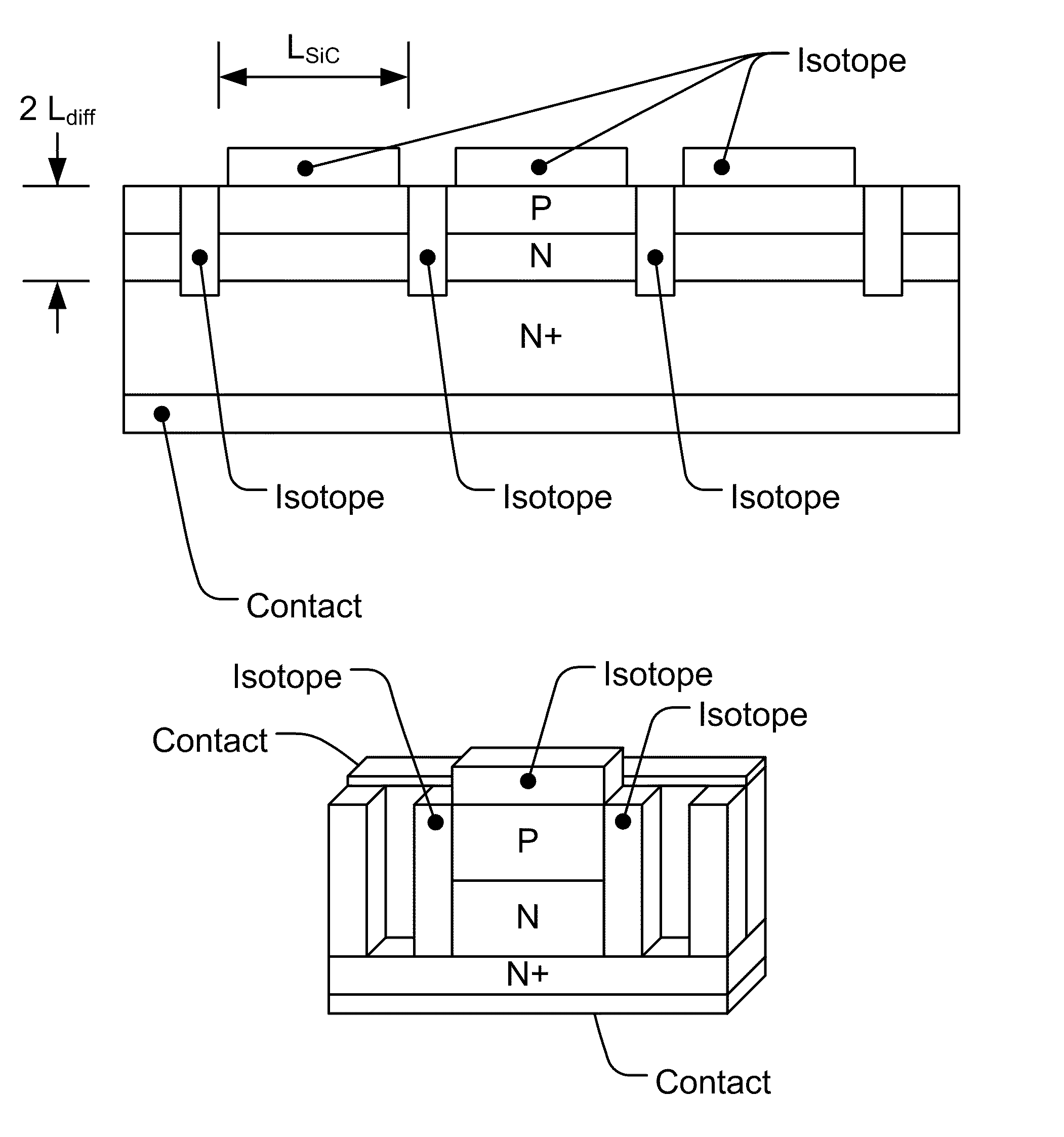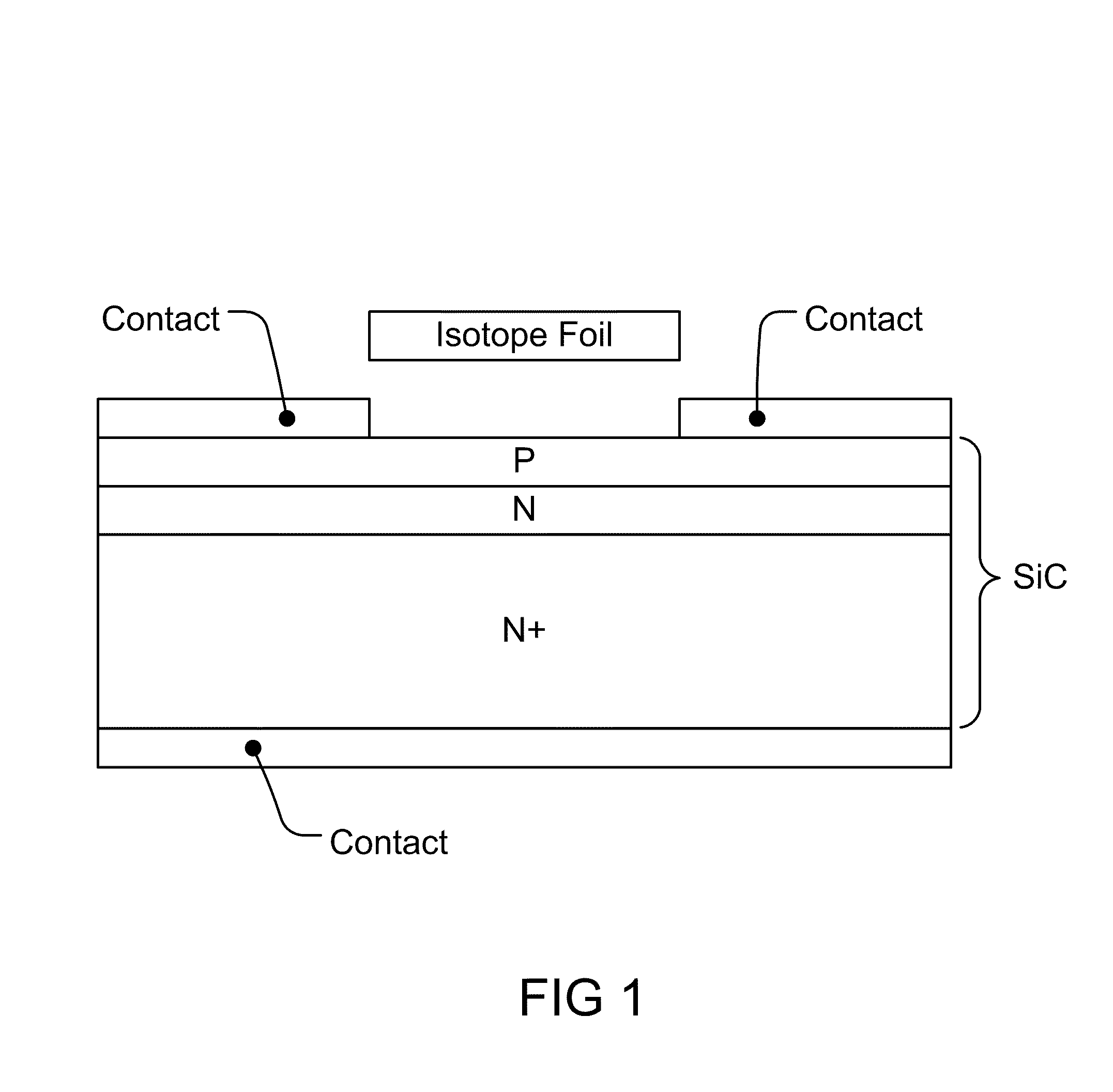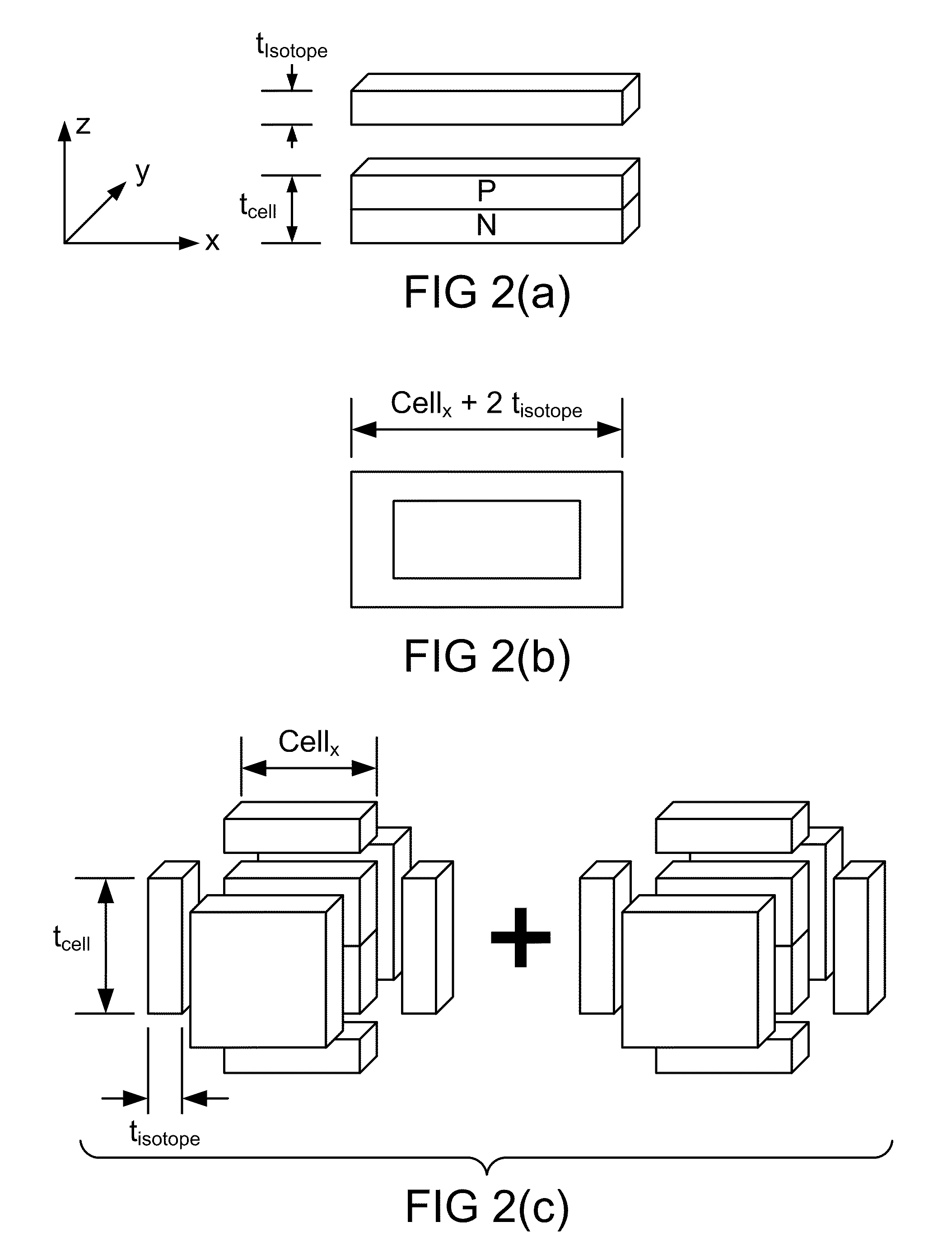Nuclear batteries
a technology of nuclear batteries and batteries, applied in the field of nuclear batteries, can solve the problems of increasing power density, large device surface area, adding complexity and cost,
- Summary
- Abstract
- Description
- Claims
- Application Information
AI Technical Summary
Benefits of technology
Problems solved by technology
Method used
Image
Examples
an embodiment
[0046]One embodiment of the invention is shown in FIG. 2. While the invention can be implemented with multiple junctions, this first embodiment will be described using a single junction. The top part of FIG. 2 shows the starting geometry which can be viewed as a combination of two slabs—a radioisotope slab and a SiC converter slab. The top slab (shown in red) is the radioisotope slab, and the bottom slab (shown in blue and yellow) is the PN junction slab. The top surface cross sectional dimensions (not shown) of the semiconductor slab are cellx and celly in the x and y directions respectively, and the z dimension (the thickness of the junction, also not shown) is denoted by tcell. In one example, we introduce additional isotope slabs to completely surround up to all four sides of the PN junction slab plus one isotope slab covering the junction slab's bottom or top surface or two additional slabs covering both the top and bottom junction surface. Multiple, and typically thousands, of...
PUM
 Login to View More
Login to View More Abstract
Description
Claims
Application Information
 Login to View More
Login to View More - R&D
- Intellectual Property
- Life Sciences
- Materials
- Tech Scout
- Unparalleled Data Quality
- Higher Quality Content
- 60% Fewer Hallucinations
Browse by: Latest US Patents, China's latest patents, Technical Efficacy Thesaurus, Application Domain, Technology Topic, Popular Technical Reports.
© 2025 PatSnap. All rights reserved.Legal|Privacy policy|Modern Slavery Act Transparency Statement|Sitemap|About US| Contact US: help@patsnap.com



